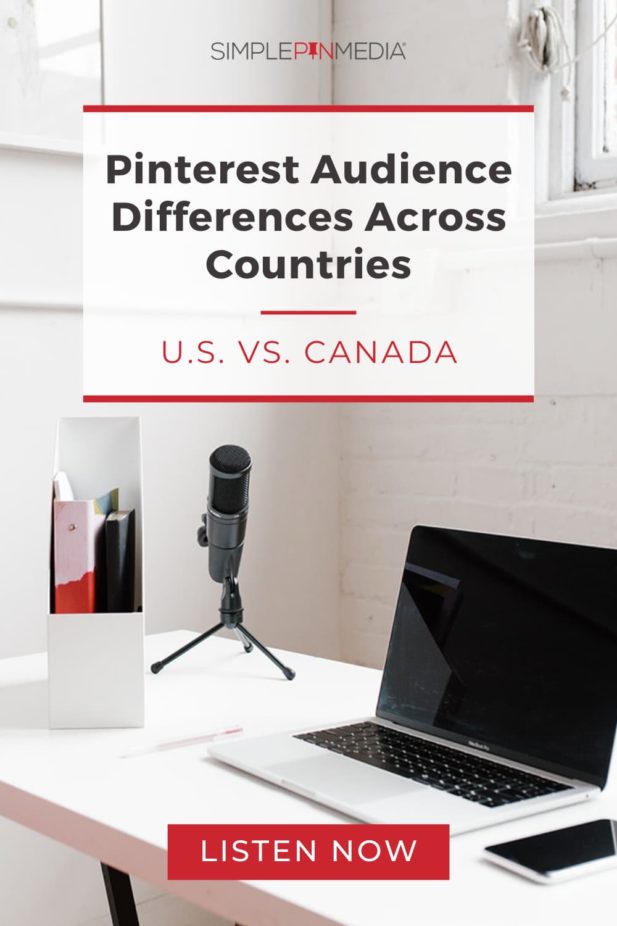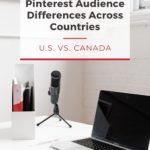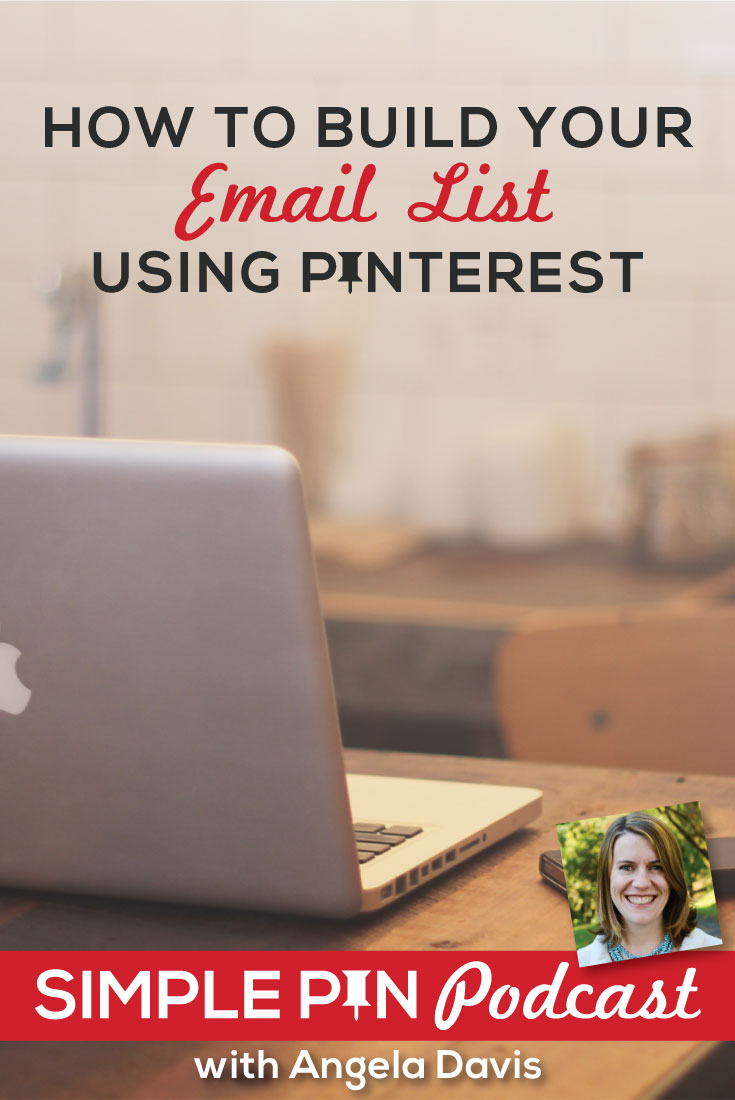When it comes to marketing on Pinterest, one of the biggest challenges is knowing how to get your content in front of the right people, no matter where they live. As Pinterest continues to expand, many businesses are asking how they can best reach their Pinterest audience, especially if they want that reach to extend beyond the U.S.
All this month, we’ve been exploring what it looks like to market internationally on Pinterest. We’ve already touched on the Netherlands and the UK. In this episode, we turn our focus to our neighbors to the north — Canada.
Today I’m talking with Alex Kopytov. Alex is a native Canadian — born, raised, and currently residing in Montreal, Canada. He is the founder of KingPin Services – a Montreal-based Pinterest marketing advertising agency.
Alex developed his own Pinterest marketing agency when he realized that the 9-5 career wasn’t for him. Prior to this, Alex worked in a corporate job in the film distribution industry. He also ran an affiliate website marketing pun-based products (an offshoot of his passion for all things Puns).
As we explore marketing differences between the U.S. and Canada today, Alex and I talk a little about how our countries are so closely related to each other and the crossover that exists in how we speak and what we talk about. Our focus, however, is on the differences between U.S. and Canadian audiences.
Specifically, we look at:
- seasonality/holidays/life moments
- currency exchange/cost of goods
- ethnic diversity
- keywords and spellings
- marketing images
- language.
I hope you take away some good tips about when to post certain content, terms to use, and how to target a Canadian audience (both through organic pins and paid advertising through promoted pins).
Now let’s dive in and talk about how to market to our Canadian friends to the north!

We have so much in common with our neighbors to the north that there really isn’t a huge difference between marketing for a U.S. business and marketing for a Canadian business. Marketing for businesses in the two countries really depends on the product and the content that you’re marketing, not necessarily where the business is situated.
Marketing between the two countries is relatively easy, according to Alex. This is because there is a common language and Canadian consumers are familiar with U.S. brands due to cross-border shopping. Geographically speaking, about 80% of the population is just across the border, a short drive away.
The two Pinterest audiences have a lot in common. People in both countries listen to the same music, watch the same movies (more or less), view the same TV shows, and are served the same ads.
The real difference lies between being a Pinterest marketer in Canada vs. the U.S.
Just like other Pinterest marketers from abroad that have been on the Simple Pin Podcast, Canada has had to wait for new Pinterest marketing features to be rolled out.
When Pinterest Trends came out in the U.S. it took forever to get access! Well, it felt like forever. That’s incredible data right there and we had to wait on the rollout. – Alex
Story pins is yet another Pinterest feature that they’ve had to wait for. In yet another example, there is a pilot program that allows marketers to promote hemp products on Pinterest, BUT it’s only available in the U.S. The hope is that it will expand to Canada soon since Alex has a client who wishes to promote these types of products.
Let’s dig into the real details of Pinterest audience differences between the two countries.
Pinterest Audience Differences: Canadian Audience vs. U.S. Audience
Seasonality/Holidays/Life Moments
Seasonality and holidays (or life moments as Pinterest calls them) are different in Canada. As a result, Pinterest marketers should adjust the timing and the content of pins accordingly. Some big seasons/holidays to consider are:
- Thanksgiving
- Remembrance Day
- Victoria Day
- Canada’s extra-long winter season.
Thanksgiving comes earlier in Canada than it does in the U.S. Thanksgiving is based on the harvest season in Canada so it’s celebrated the second Monday of October rather than in November. The great thing for marketers though is the food served at both Thanksgiving celebrations is very similar. So the same content (e.g., turkey, stuffing, potatoes, pie, etc.) can be used to market to both audiences. Just keep in mind that you have to pin the content earlier if you want to target Canadians.
Veterans’ Day, celebrated on November 11th in America, is known as Remembrance Day in Canada. While these life moments are celebrated on the same day in both countries and both commemorate the sacrifices of people in armed conflicts, each country has its own set of traditions that are very different. It is important to be aware of these differences.
In the United States, we celebrate Memorial Day in May. In Canada, however, Victoria Day is celebrated at the end of May. You have to adjust your strategy for moments like these if you want to resonate with Canadians.
Canadian winters are a lot longer than in the States. They start sooner and end later relative to winter in America. Content that targets behaviors associated with winter will resonate well in Canada. The target time for all things winter is longer for Canada than it is in the U.S.
Currency Exchange/Cost of Goods
The cost of purchasing is also something to keep in mind when marketing to Canadians.
Many things that might seem inexpensive here in the U.S. may be considered expensive in Canada. Everything is a lot more expensive when they buy it online. Be aware of the currency exchange rate and the additional sales tax Canadians must pay on top of the purchase price for an item.
Items that are imported to Canada might be subject to taxes like GST/PST/HST or duty taxes. All of this can add up quickly and cause your Canadian customers to pass on your content if you haven’t taken that into consideration.
Ethnic Diversity
Canada has a 23% higher immigration rate relative to the U.S. This means there is a wide range of backgrounds, traditions, and cultures that influence consumer behavior.
Canadians find international content attractive, particularly as it relates to food, recipes, and various imported products, Many Canadians have a strong sense of belonging to both Canada and their source country. In fact, citizens can declare two ethnicities in Canada. You’ll often hear Canadians say things such as:
I’m Canadian, but I’m also Jamaican or I am Russian, but also Canadian. My friends are Italian, but also Canadian.
Half of Canada’s population has declared two ethnic backgrounds. It’s a mosaic of cultures so international content is embraced by the Canadian Pinterest audience.
Keywords and Spelling Differences
Canada has 13.2 million active Pinterest users compared to 98 million in the U.S. When it comes to deciding which keywords and spelling choices to use, consider the greater population you wish to target.
Use words like bachelor or bachelorette rather than stag or stagette or hat rather than tuque for a winter cap. It is ok to use U.S. terms for keywords when marketing. The Canadian audience will understand and accept the American words.
This applies to spelling differences as well. If you are targeting primarily for an American audience, then use the U.S. spelling. It isn’t necessary to use favourite instead of favorite, or theatre instead of theater, for example. If you are targeting primarily a Canadian audience, then use the Canadian spelling.
To target both audiences, then default to the American spelling. Canadians will not be offended. Even when searching keywords in Canada, the spellings that come up will be American because those spellings are the most frequently searched on Pinterest.
Related: How to Choose the Right Pinterest Keywords
There are some terms or keywords that you need to use accurately if you want to target a Canadian Pinterest audience.
The use of accurate units of measurement, for example, is important. When targeting a Canadian audience, you need to remember that they use the metric system. Units of measurement to consider using include:
- Celsius instead of Fahrenheit
- Kilometers instead of miles
- Grams instead of ounces
- Liters instead of gallons.
Pinterest Marketing Images
Alex advises to not go overboard on the cliche Canadian imagery when creating your Pinterest images. Using beavers, moose or mounties in your imagery will not resonate with a Canadian audience. It will not feel authentic if you use these types of images.
Two image categories you CAN target are hockey and maple syrup.
Go ahead and post as much hockey stuff as you like! That will always be with us. ~Alex
Maple syrup is also big in Canada.
It falls between mid-March and the end of April. Using the term maple syrup would not be considered a cliche because it really is a season and they enjoy consuming a lot of maple syrup. It is an inexpensive treat.
Maple syrup recipes will skyrocket during this season so it’s a good time to target recipes like maple butter, maple cookies, and maple fudge. It is a versatile ingredient and a natural sweetener.
Alex said he’s not a baker but for food bloggers, he imagines you might be able to swap maple syrup into recipes that use honey. Think of this as a possible way to target a Canadian audience during this season.
Red and white imagery will always work for a Canadian audience. If it matches your brand, this is a great way to target a Canadian audience on Pinterest.
Promoted Pins are Awesome!
This is the topic of the month for sure.
There have been many changes on the promoted pins front lately, especially in the number of people flooding to promoted pins as they leave Facebook advertising. Let’s spend a bit of time delving into why promoted pins are so awesome, as well as the specifics of targeting a Canadian audience in your campaigns.
Related: The Transition from Facebook Marketing to Pinterest Marketing
Key Features that Make Promoted Pins Such a Great Marketing Tool
When talking to a potential client whose unfamiliar with Pinterest marketing, Alex focuses on communicating two key points:
- What happens to content at the conclusion of an ad campaign?
- Does the audience’s intent match the intent of the platform?
Content Shelf Life
Campaigns require a lot of work and attention. Potential clients should be aware of what happens to all that effort when the campaign concludes.
Ask the client, “What happens to your content when your campaign is done?”
The answer offers a great opportunity for you as a Pinterest marketer.
After a campaign concludes on other platforms, the content just disappears. The exciting thing about promoted pins is that the content lives on forever! This can be a real eye-opener for clients considering a move from another platform.
Audience Intent vs, Platform Intent
Pinterest ads aren’t considered intrusive to Pinterest users because they fit their purpose for being there.
Ads on Pinterest are native, meaning, what you are looking for is what you see in the search results. Pinterest users come to Pinterest to “shop” for certain content and promoted pins help them find targeted results. They find what they are looking for.
Compare this to a Facebook or Instagram client that comes to the platform for social purposes. They have a completely different focus when they use these platforms. They often find Facebook or Instagram ads to be intrusive.
Of course, there is also the conversions advantage. Conversions are cheaper on Pinterest than on other platforms.
Alex was running his affiliate website, he discovered an exciting truth about marketing on Pinterest:
I noticed that all my traffic came from Pinterest and how amazing the platform is… I can post as much as I want for free and as often as I like! It’s just fantastic. Plus the SEO is tied with Google Trends. — Alex
The long-lasting life of content and targeting to your audience’s specific intent are two big benefits of marketing on Pinterest, but the cost of conversions is another big plus.
Targeting Promoted Pins to a Canadian Audience
Location Targeting
Targeting a Canadian audience can be very specific. You can target specifically by location or region. In Canada, you can target many different regions– provinces; rural areas vs. urban cities; the Maritime provinces; Toronto; Montreal; Red Deer, Alberta; Cornwall, Ontario; Kamloops, British Columbia. There are so many options.
You can really target exactly where you want to display your promoted pins using locations.
Annual Events
Canada has many annual events that are huge. If you have content that resonates well with events like rodeos, festivals, and many others, you could consider targeting specific annual events, seasons and locations in Canada.
For example:
- The Calgary Stampede – the world’s largest outdoor rodeo during the month of July
- Montreal’s Jazz Fest, Comedy Fest and the Formula 1 Canadian Grand Prix (the F1) are all in the summer
- The Toronto International Film Festival in September
- Winterlude in Ottawa – a winter festival in February
- The Quebec Winter Carnival – the largest winter festival in the world held in February
Language
You can also target languages in Canada. It might be a good idea to try some pins that incorporate text in French.
Quebec, for example, represents 25% of all Canadian monthly active users on Pinterest. Everyone in Quebec speaks French, so using French keywords can help you target that audience.
If you plan to use this as part of your strategy, be sure to use a translator that is familiar with the particular native slang used in Quebec. Don’t use Google’s Parisian French translator. The translation provided by this tool will not resonate well with people in Quebec.

Alex’s Final Thoughts for Targeting a Canadian Pinterest Audience
Be polite. Be genuine. Be authentic.
Canadians will appreciate your efforts to be true to who they are as a people.
Canadians have a humble pride in their country. They are fond of products made in Canada and like to support their local economy.
One way for a U.S. brand to enter the Canadian market would be to explore collaborations with a local influencer or cooperative marketing with a local brand. Partnering with a Canadian voice can help you build an inside track with the Canadian audience.
Working with someone who is native and understands the Canadian culture, spellings, language/slang, festivals, etc. is one of the best ways to connect with that market.
On that note, if you are a U.S. marketer who is looking to target audiences in Canada, you have just found your person who is “on the ground”. To find out more about Alex, you can connect with him at King Pin Services, on LinkedIn, or via email.
For Further Listening/Reading:








